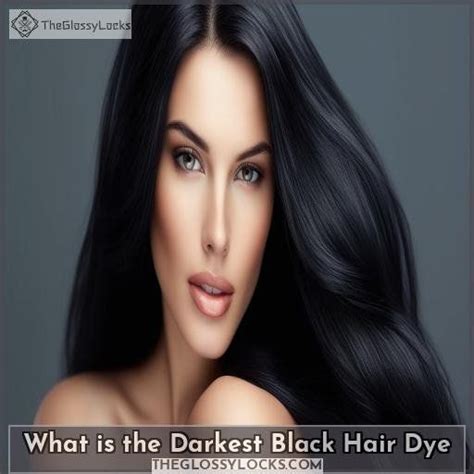Black No. 1, classified as CI Acid Black 1 by the Colour Index International, is an azo dye known for its intense and deep black color. It is widely used in various industries, including textiles, leather, and plastics, due to its excellent lightfastness and resistance to washing.

1. Discover the History and Properties of Black No. 1 Dye
Black No. 1 dye was first synthesized around 1876-1880. It belongs to the group of azo dyes, characterized by their nitrogen-nitrogen double bond (-N=N-). This structural feature contributes to the dye’s high lightfastness, making it resistant to fading even under prolonged exposure to sunlight.
Black No. 1 dye also exhibits excellent resistance to washing and other chemical treatments. This makes it suitable for use in fabrics intended for both industrial and domestic applications. It is also highly soluble in water, facilitating its application in dyeing processes.
2. Explore the Applications of Black No. 1 Dye in Various Industries
Textile Industry:
Black No. 1 dye is extensively used in the textile industry to color fabrics made from natural fibers such as cotton, wool, silk, and linen, as well as synthetic fibers including nylon, polyester, and acrylic. It produces a deep and uniform black shade that is resistant to fading, making it ideal for garments, upholstery, curtains, and other textile applications.
Leather Industry:
In the leather industry, Black No. 1 dye is employed to impart a black color to leather products such as bags, shoes, wallets, and furniture. Its ability to penetrate deeply into the leather ensures a durable and long-lasting black finish.
Plastics Industry:
Black No. 1 dye is utilized in the plastics industry to color various plastic products, including toys, electronics, and household appliances. It provides a deep and consistent black color that enhances the aesthetics of these products.
3. Uncover the Potential Risks and Safety Precautions for Black No. 1 Dye
While Black No. 1 dye is generally considered safe, certain precautions should be taken to minimize potential risks:
- Skin Contact: Prolonged exposure to the dye can cause skin irritation and allergic reactions. Always wear gloves and protective clothing when handling the dye.
- Inhalation: Avoid inhaling the dye’s dust or fumes, as they can irritate the respiratory system. Ensure proper ventilation in workplaces where the dye is used.
- Environmental Impact: Black No. 1 dye is a synthetic compound that can potentially harm the environment if not disposed of properly. Comply with local regulations for wastewater treatment and disposal.
4. Discover Innovative Applications for Black No. 1 Dye
Beyond its traditional uses, Black No. 1 dye has potential applications in various emerging fields:
- Solar Energy: Black No. 1 dye can be utilized as a light-absorbing material in solar panels, enhancing their efficiency in converting sunlight into electricity.
- Biomedical Applications: The dye’s ability to bind to certain proteins and DNA makes it useful for diagnostic and therapeutic purposes.
- Carbon Capture and Storage: Black No. 1 dye can be incorporated into adsorbents to capture carbon dioxide from flue gases, contributing to carbon sequestration efforts.
5. Tables for Quick Reference
Table 1: Physical and Chemical Properties of Black No. 1 Dye
| Property | Value |
|---|---|
| Chemical structure | C20H11N5O7S3Na2 |
| Molecular weight | 519.5 g/mol |
| Appearance | Black powder |
| Melting point | >250 °C |
| Solubility | Water-soluble |
Table 2: Lightfastness Properties of Black No. 1 Dye
| Test Method | Lightfastness Rating |
|---|---|
| ISO 105-B02:2014 | 7-8 (Blue Scale) |
| AATCC 16-2004 | 4-5 (Gray Scale) |
Table 3: Washing Fastness Properties of Black No. 1 Dye
| Test Method | Washing Fastness Rating |
|---|---|
| ISO 105-C06:2010 | 4-5 (AATCC Gray Scale) |
| AATCC 61-2010 | 4-5 (AATCC Gray Scale) |
Table 4: Toxicological Properties of Black No. 1 Dye
| Test | Typical Value |
|---|---|
| Oral LD50 (rat) | >5 g/kg |
| Dermal LD50 (rabbit) | >2 g/kg |
| Skin irritation | Moderate |
| Eye irritation | Mild |
6. Tips and Tricks for Effective Use of Black No. 1 Dye
- To achieve a deep and uniform black color, use the dye in a high concentration.
- For optimal results, mordant the fabric with a suitable mordant before dyeing.
- Use a pH-neutral dyeing solution to prevent the dye from hydrolyzing and losing its color.
- Rinse the dyed fabric thoroughly to remove any excess dye and improve its colorfastness.
- Avoid using bleach or harsh detergents when washing dyed fabrics to maintain their black color.
7. Effective Strategies for Responsible Use of Black No. 1 Dye
- Implement proper wastewater treatment and disposal practices to minimize environmental pollution.
- Encourage the use of sustainable dyeing methods, such as continuous dyeing or exhaust dyeing, to reduce water and energy consumption.
- Promote the use of natural or biodegradable alternatives to Black No. 1 dye whenever possible.
- Foster research and development of new applications for Black No. 1 dye to maximize its potential benefits while mitigating risks.
Conclusion
Black No. 1 dye is a versatile and effective colorant with a wide range of applications in various industries. Its intense and durable black color, coupled with its excellent lightfastness and washing resistance, makes it a preferred choice for numerous textile, leather, and plastic products. By understanding its properties, potential risks, and innovative applications, we can harness the benefits of Black No. 1 dye while practicing responsible use and minimizing its environmental impact.
